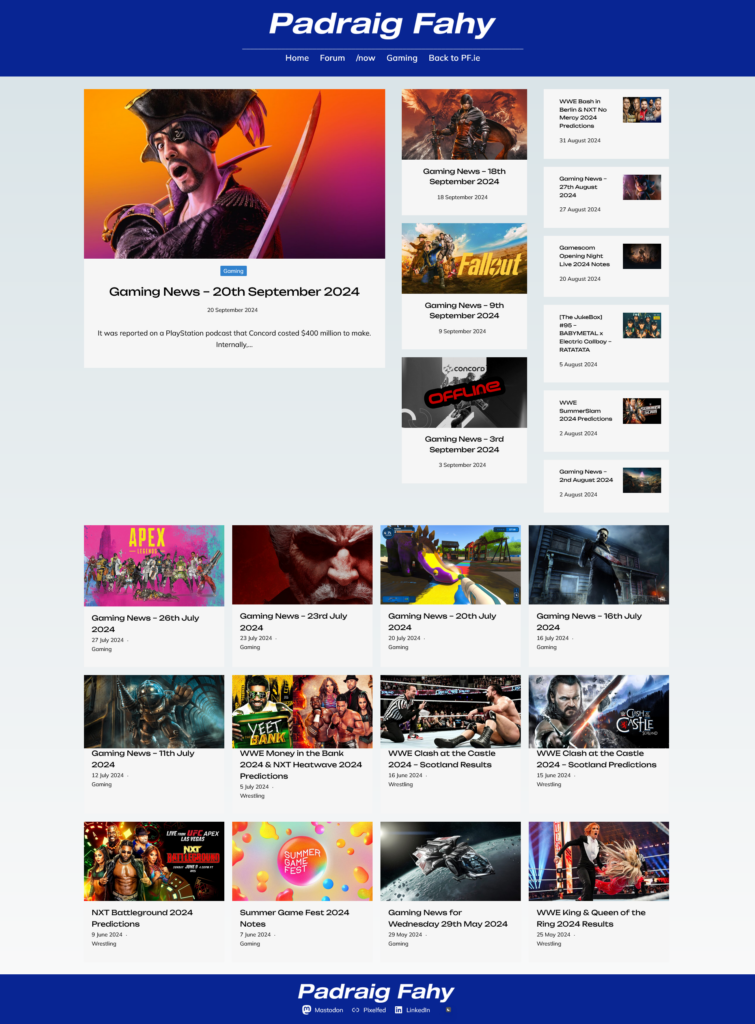I have to be very clear from the outset, that I am not referencing the Ghost devices that were seized as part of a multinational raid, but rather the Ghost blogging software.
I switched to Ghost for a 2nd time back in March 2021 after they released Version 4 and I have been using it quite a bit between then and now.
I just wanted a simple way to blog without having to deal with plugins. The editor was quite powerful and it was a great experience,
So why did I change?
In the more recent updates, Ghost has been adding features to the editor that would help with linking posts to old post and edit images directly on the website. But I couldn’t. The linking of old posts feature was breaking with no helpful warning, so I hoped that the next versions would help [They didn’t] and their image editing tools were made available for free for Ghost Pro subscribers but not for people that are self-hosting.
And that is another thing… Ghost really don’t want you self-hosting the software for Production. They do not provide support for self-hosting installs, and that is a disappointing factor that I had to deal with, and was the ultimate reason for changing.
So here I am. Back on WordPress.
I did ask on Mastodon if there were alternatives to try out.
I really wanted to try WriteFreely, but no matter what I did… I couldn’t get it to work at all. I probably didn’t have any patience to troubleshoot it. I will revisit this one day and try and get it working.
I was advised to check out ClassicPress. While it is cool in theory and would probably work for certain setups, it was not for me. Thankfully, I was able to convert the work that I did on ClassicPress to WordPress via a Manual Update and everything has been working great.
I am not a fan of Gutenberg, but I put some time and effort in and managed to re-create the home page and the posts pages to be very similar to my Ghost site.


You may see references to “signing up for a newsletter”. No one signed up. And that’s OK.
This blog is a hobby and I do not rely on it to pay my bills at the end of the day!
I am using 8 plugins on this WordPress site, and at the moment, I wouldn’t need any more to (mostly) re-create the experience that I had in Ghost.
- ActivityPub – This one was given. While Ghost are actively working on ActivityPub, (which I appreciate), I have my fears that it would only be available to their Pro users and will provide Zero support to people on self-hosting.
- You can now follow this blog, either put the URL for this site, or
@padraig@padraig.bloginto the search of your Fediverse client, and you can see when I release a new blog post!
- You can now follow this blog, either put the URL for this site, or
- Connect Matomo – This is for website analytics. I switched from Google Analytics to a self-hosted Matomo install in 2022. This was done when I no longer wanted to be shackled into Google’s ecosystem.
- Instant Images – I love Unsplash and I have used them quite extensively on this blog over the years and I do not plan on changing this. It also has support for Openverse, Pixabay and Pexels.
- Shortcorder – I used ‘Snippets’ in Ghost which was like canned text. It is used for the footer of my posts.
- Spectra – This is a plugin that gives you access to more blocks for Gutenberg. It is mainly used on the home page for the posts layout. I try to use WordPress’ own blocks where possible.
- WP Dark Mode – If users want it, there is a 🌙moon at the bottom of the page that will switch it to a Dark Mode.
- Redis Object Cache & WP Super Cache – For object and page caching, respectively.
The new WordPress site is only a few days old, and I am still tweaking it to my liking!
If you have suggestions on how I can improve the look, feel, functionality of the site, please let me know on the Fediverse.
- 📰You can now follow this blog on the Fediverse at @padraig@padraig.blog
- You can view this post by copying this link into your search bar on your Fediverse: https://padraig.blog/my-time-with-ghost-is-at-an-end-for-now/
- 📣Follow my personal Fediverse account at @padraig@mastodon.ie










